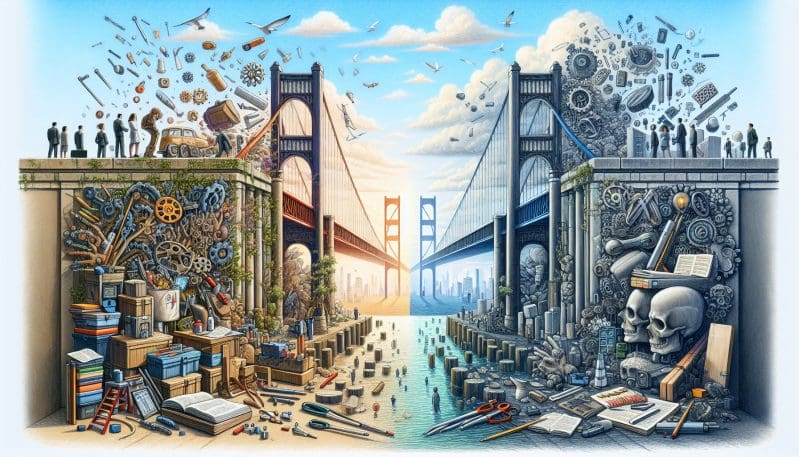Bridging the Skills Gap with Lifelong Learning Initiatives: Key to Future-Proofing Careers
- Home
- Bridging the Skills Gap with Lifelong Learning Initiatives: Key to Future-Proofing Careers

- Editors Desk
- January 11, 2024
- 0 Comments
In the face of relentless technological advancements and shifting industry landscapes, the labor market continues to undergo a profound transformation. This constant evolution presents a significant challenge – the widening skills gap. ‘No Worker Left Behind’ is not just a slogan; it is a fundamental promise to the workforce that requires a coordinated and strategic approach to uphold. The bedrock of this promise lies in lifelong learning initiatives that are crucial for mid-career workers who stand at the precipice of obsolescence.
The Need for Continuous Education and Training
It’s a truism that the only constant in life is change, and nowhere is this more evident than in the modern job market. Workers are now expected to adapt more quickly than ever before as roles evolve, technologies emerge, and industries are disrupted. However, traditional education models, with their finite end-points, are no longer adequate to prepare workers for a lifetime of gainful employment.
The rapid pace of automation and digitalization means that job descriptions are fluid, with new competencies needed almost annually. To stay relevant, workers cannot rely solely on the skills they acquired years ago; they must engage in continuous self-improvement through education and training. Lifelong learning is the bridge over this skills chasm, allowing workers to maintain the pace with innovation and preserve their employability.
Innovative Lifelong Learning Models
Forward-thinking companies are now pioneering innovative learning models that facilitate ongoing employee development. These range from in-house training and microlearning platforms to collaborations with MOOCs (Massive Open Online Courses) for specialized upskilling. ‘Learning in the flow of work’ is a concept gaining traction, wherein education is integrated seamlessly with daily tasks, reducing friction and resistance to learning.
Another groundbreaking model is the creation of corporate academies, either physical or virtual, where employees can access a plethora of courses tailored to their industry and career paths. These academies not only provide the necessary skills but also foster a culture of learning within the organization, aligning personal growth with corporate success.
Partnership Opportunities
The responsibility for lifelong learning does not fall on workers or employers alone. There is a growing need for a tripartite partnership between businesses, educational institutions, and government bodies. Each brings unique strengths to the table: businesses understand the skills they require, educational institutions know how to deliver training effectively, and governments can incentivize both to invest in upskilling initiatives.
Government policies could include tax breaks for companies that invest in employee education or subsidies for workers seeking to further their skills. Meanwhile, educational institutions can offer tailored short courses for specific industries, ensuring that training is relevant and focused.
Incentivizing Continuous Learning
One of the main challenges in promoting lifelong learning is engagement. How do you motivate a workforce to embrace ongoing education? The answer lies in understanding what drives people: recognition, advancement, and rewards. Employers need to recognize and celebrate achievements in learning, tie progression paths to the completion of training modules, and reward those who dedicate themselves to self-improvement.
The Impact on Productivity and Job Satisfaction
Investing in learning and development has a direct impact on productivity. A workforce that is up-to-date with the latest skills and technologies is more efficient and capable of driving innovation. Furthermore, employees who feel their company is investing in their careers are more engaged and have a greater sense of job satisfaction. This, in turn, can lead to lower turnover rates and a competitive edge in attracting top talent.
Striving for a future where ‘no worker is left behind’ is not just an altruistic goal, but a strategic imperative. Through lifelong learning, businesses can ensure their workforce is resilient, adaptable, and prepared for the challenges of tomorrow. In doing so, they not only secure the future of their employees but also the success and sustainability of their organization in an ever-changing global economy.

Leave A Comment